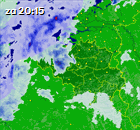What Do You Talk About?
Now that you have established contact with another ham via CW, what the heck do you talk about? Every ham contact, CW or phone, consisits of at least three basic items: your name, your location or QTH, and a signal report(RST) for the other station. What order you send these three items is unimportant, although commonly today you will hear signal report/location/name. When I started in ham radio 30 years ago, the order was almost always signal report/name/location.
The Standard name/location/RST/73 QSO
These three items are the essential minimum required for a QSO. While it is true that in working a DX station in a pileup you may only exchange callsigns and a signal report, in a "real" contact the name/location/RST are standard, and you continue from there. The next most commonly discussed subjects in CW QSOs are usually the weather (WX), the radio equipment people are using, the hams' ages and how long they have been hams. For many CW contacts that will be the extent of the contact. The other ham will sign off and end the contact. Most likely because the other ham is new to CW conver-sation making, and simply doesn't know what else to say. Or perhaps the short-winded ham isn't into making conversation. Personally I enjoy longer CW contacts, called "rag chews".
QSO Template for Beginners......
When first starting out on CW, many new hams will often use a temp-late or model, to make sure they send all the essential information. For example:
" ______ de ON3CL TNX FER CALL BT MY NAME IS LUC LUC BT QTH IS BREDENE, BREDENE BT UR RST IS ___ BT HW COPY ? "
And perhaps on your second transmission:
" ______ de ON3CL TNX ______(name) FOR NICE REPORT BT MY RIG IS A YAESU FT 817 ANT IS A DIPOLE BT WX IS ________ TEMP IS ___ BT HW COPY ? "
Just fill in the blanks to fit the QSO, inserting your own callsign, name, QTH, and rig. And go on from there as a starting point if you choose. By the way, that strange BT is used in CW as a spacer, a device to separate your thoughts. Some folks will use a period instead. BT (=) is sent in CW as (dah dit dit dit dah). The CW letters B and T sent together.
I feel that a more professional CW technique is to limit the amount of punctuation used during a QSO. Some new hams may send four or five BTs in a row while they think about what they will send next. One or two BTs in a row should be enough. Here is what I mean by limiting punctuation, " TNX ( NAME) UR RST IS 579 579 MY NAME IS LUC LUC ES MY QTH IS BREDENE BREDENE BT HW? N1XYZ de ON3CL K ". There, I got away with using just one BT.
Now that you have established contact with another ham via CW, what the heck do you talk about? Every ham contact, CW or phone, consisits of at least three basic items: your name, your location or QTH, and a signal report(RST) for the other station. What order you send these three items is unimportant, although commonly today you will hear signal report/location/name. When I started in ham radio 30 years ago, the order was almost always signal report/name/location.
The Standard name/location/RST/73 QSO
These three items are the essential minimum required for a QSO. While it is true that in working a DX station in a pileup you may only exchange callsigns and a signal report, in a "real" contact the name/location/RST are standard, and you continue from there. The next most commonly discussed subjects in CW QSOs are usually the weather (WX), the radio equipment people are using, the hams' ages and how long they have been hams. For many CW contacts that will be the extent of the contact. The other ham will sign off and end the contact. Most likely because the other ham is new to CW conver-sation making, and simply doesn't know what else to say. Or perhaps the short-winded ham isn't into making conversation. Personally I enjoy longer CW contacts, called "rag chews".
QSO Template for Beginners......
When first starting out on CW, many new hams will often use a temp-late or model, to make sure they send all the essential information. For example:
" ______ de ON3CL TNX FER CALL BT MY NAME IS LUC LUC BT QTH IS BREDENE, BREDENE BT UR RST IS ___ BT HW COPY ? "
And perhaps on your second transmission:
" ______ de ON3CL TNX ______(name) FOR NICE REPORT BT MY RIG IS A YAESU FT 817 ANT IS A DIPOLE BT WX IS ________ TEMP IS ___ BT HW COPY ? "
Just fill in the blanks to fit the QSO, inserting your own callsign, name, QTH, and rig. And go on from there as a starting point if you choose. By the way, that strange BT is used in CW as a spacer, a device to separate your thoughts. Some folks will use a period instead. BT (=) is sent in CW as (dah dit dit dit dah). The CW letters B and T sent together.
I feel that a more professional CW technique is to limit the amount of punctuation used during a QSO. Some new hams may send four or five BTs in a row while they think about what they will send next. One or two BTs in a row should be enough. Here is what I mean by limiting punctuation, " TNX ( NAME) UR RST IS 579 579 MY NAME IS LUC LUC ES MY QTH IS BREDENE BREDENE BT HW? N1XYZ de ON3CL K ". There, I got away with using just one BT.




0 reacties:
Een reactie posten